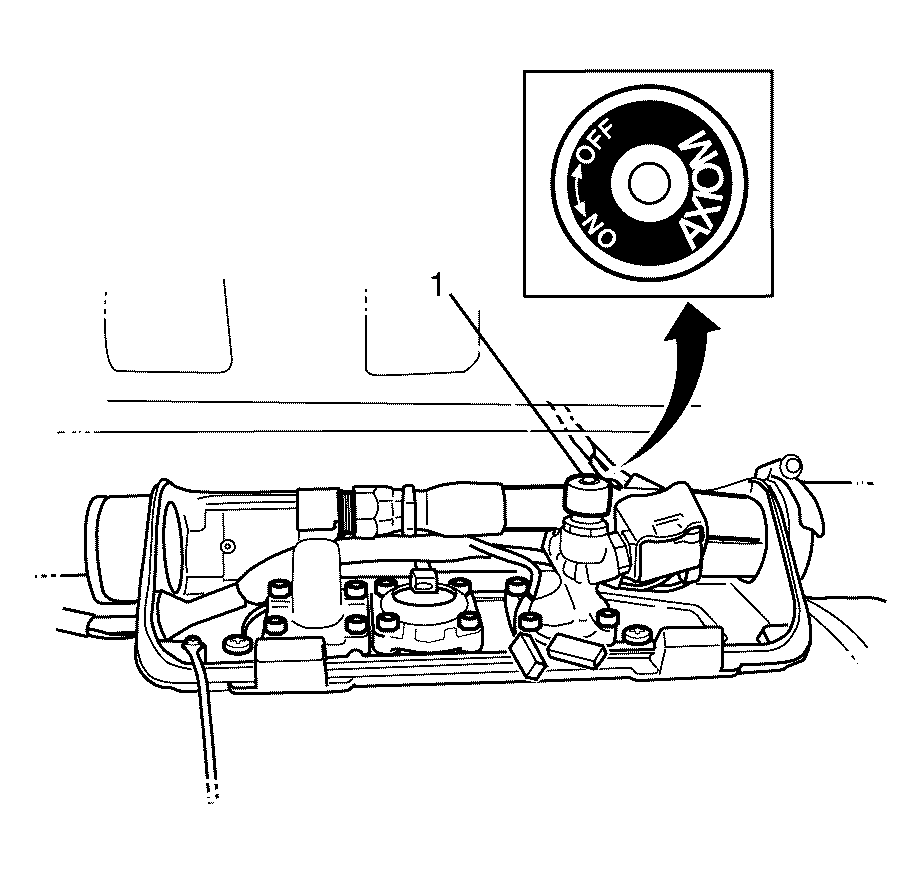Fuel Tank Replacement LWB SWB
Removal Procedure
Tools Required
EN-48536 Frame Support Tool (Engine Lower 65 mm Kit)
- Raise and support the vehicle. Refer to Lifting and Jacking the Vehicle .
- Drain the fuel tank. Refer to Fuel Tank Draining .
- Relieve the fuel system pressure. Refer to Fuel Pressure Relief .
- Remove the exhaust system. Refer to Exhaust System Replacement .
- Remove the propeller shaft. Refer to Propeller Shaft Replacement .
- Remove the right rear wheel. Refer to Tire and Wheel Removal and Installation .
- Disconnect the evaporative emission (EVAP) line (1), by squeezing both sides of the line (as indicated in the illustration) and pulling it toward the rear of the vehicle.
- Release the worm drive hose clamp (1) and remove the filler tube (2).
- Disconnect the fuel feed line (1) and evaporative emission (EVAP) line (2). Refer to Plastic Collar Quick Connect Fitting Service .
- Disconnect the fuel tank electrical connector (1).
- Support the rear frame assembly using a suitable tool.
- Remove the rear frame to chassis retaining bolts (1) and (2) and discard.
- Support the rear frame using the bolt (1) from the EN-48536 special tool kit . Repeat for the opposite side.
- Support the rear frame using the bolt (1) from the EN-48536 special tool kit . Repeat for the opposite side.
- Lower the rear frame approximately 50 millimetre's (2 in) (A) at the rear mounting surface between the rear frame and the chassis.
- This will allow clearance to access the fuel tank strap bolts.
- Remove the fuel tank heat shield. Refer to Fuel Tank Heat Shield Replacement .
- Disconnect the park brake rear cables from the park brake front cable equalizer bracket assembly. Refer to Parking Brake Front Cable Replacement .
- Disconnect the evapouritive emission line (2) from the evapourative emission canister (3). Refer to Plastic Collar Quick Connect Fitting Service .
- Remove the fuel tank strap to chassis retaining bolts (1).
- Position the fuel tank straps away from the fuel tank.
- Carefully bend the fuel tank straps enough to allow the fuel tank to be removed.
- With the aid of an assistant, carefully lower the fuel tank from the vehicle.
- Remove the following components if replacing just the fuel tank.
Caution: Refer to Gasoline/Gasoline Vapors Caution in the Preface section.
Caution: Refer to Safety Glasses Caution in the Preface section.
Caution: Refer to Vehicle Lifting Caution in the Preface section.
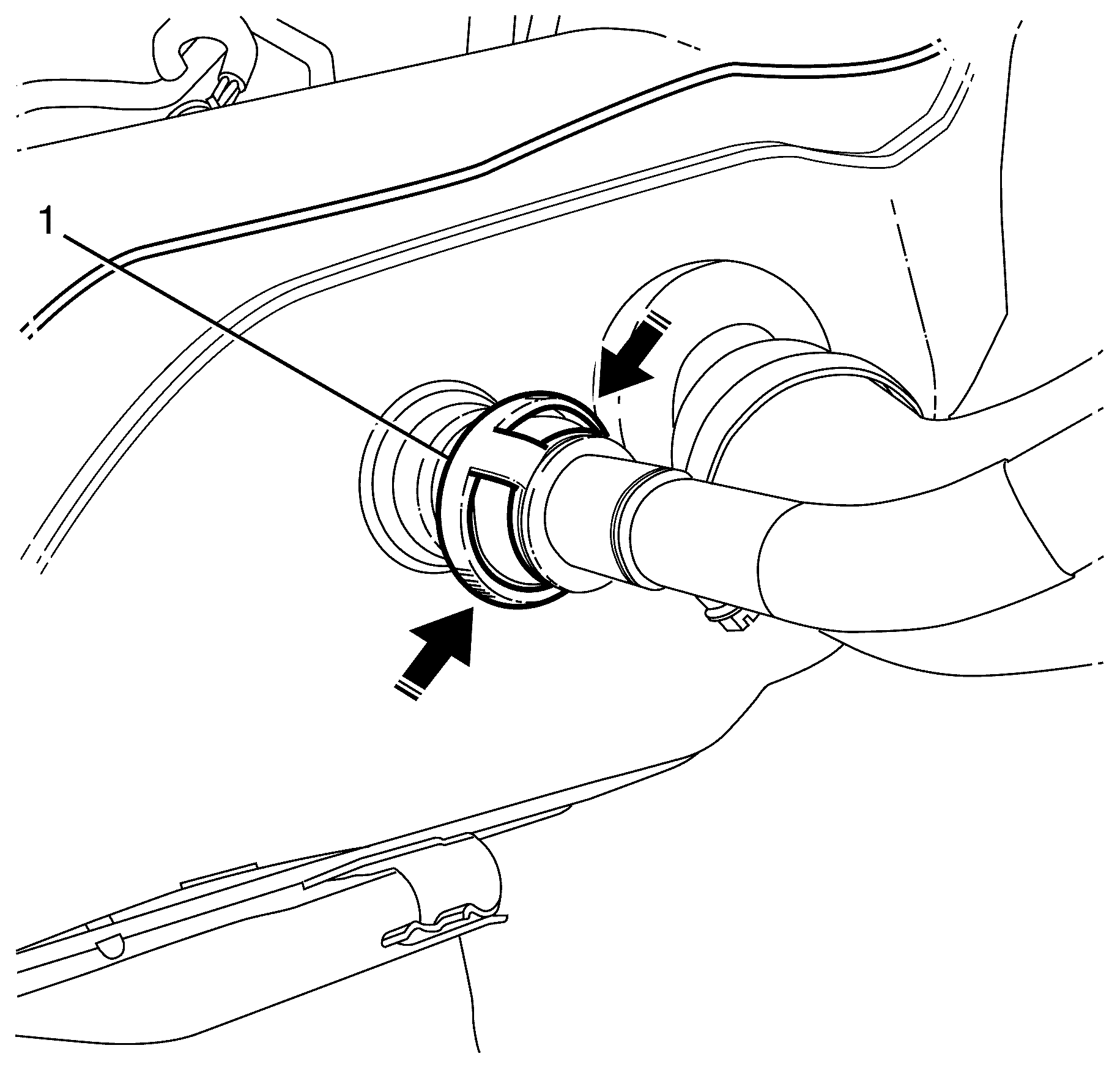
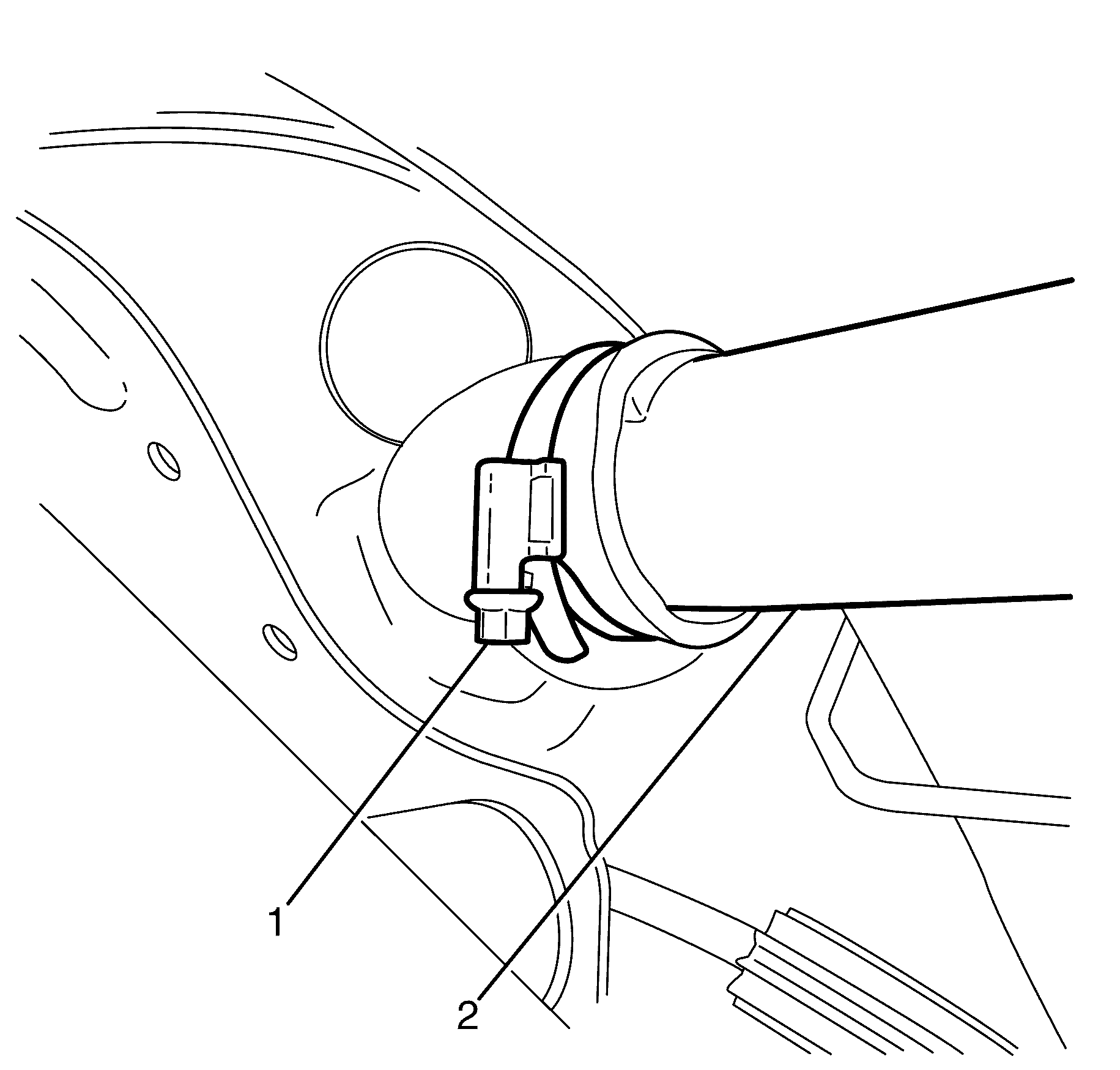
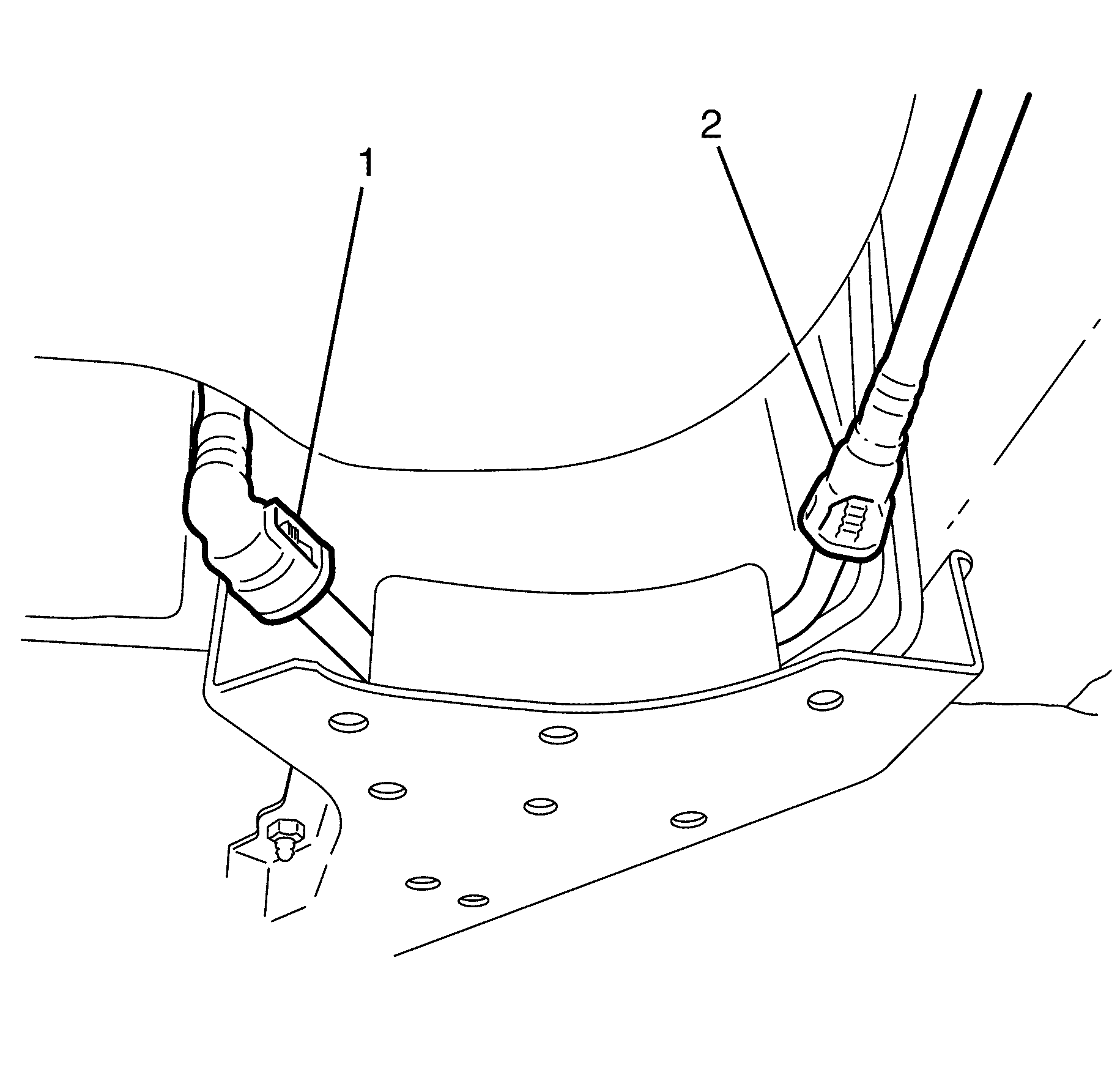
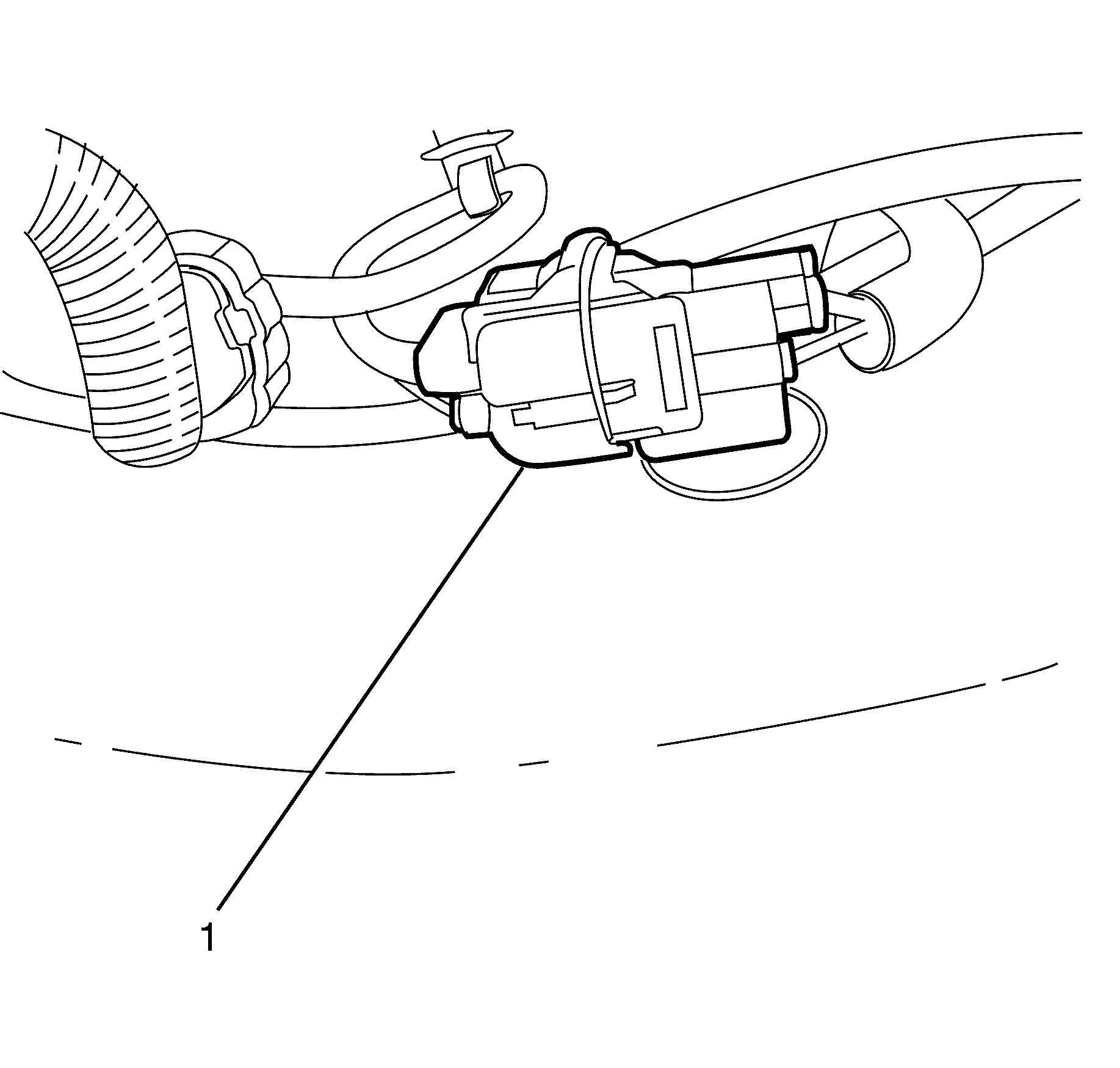
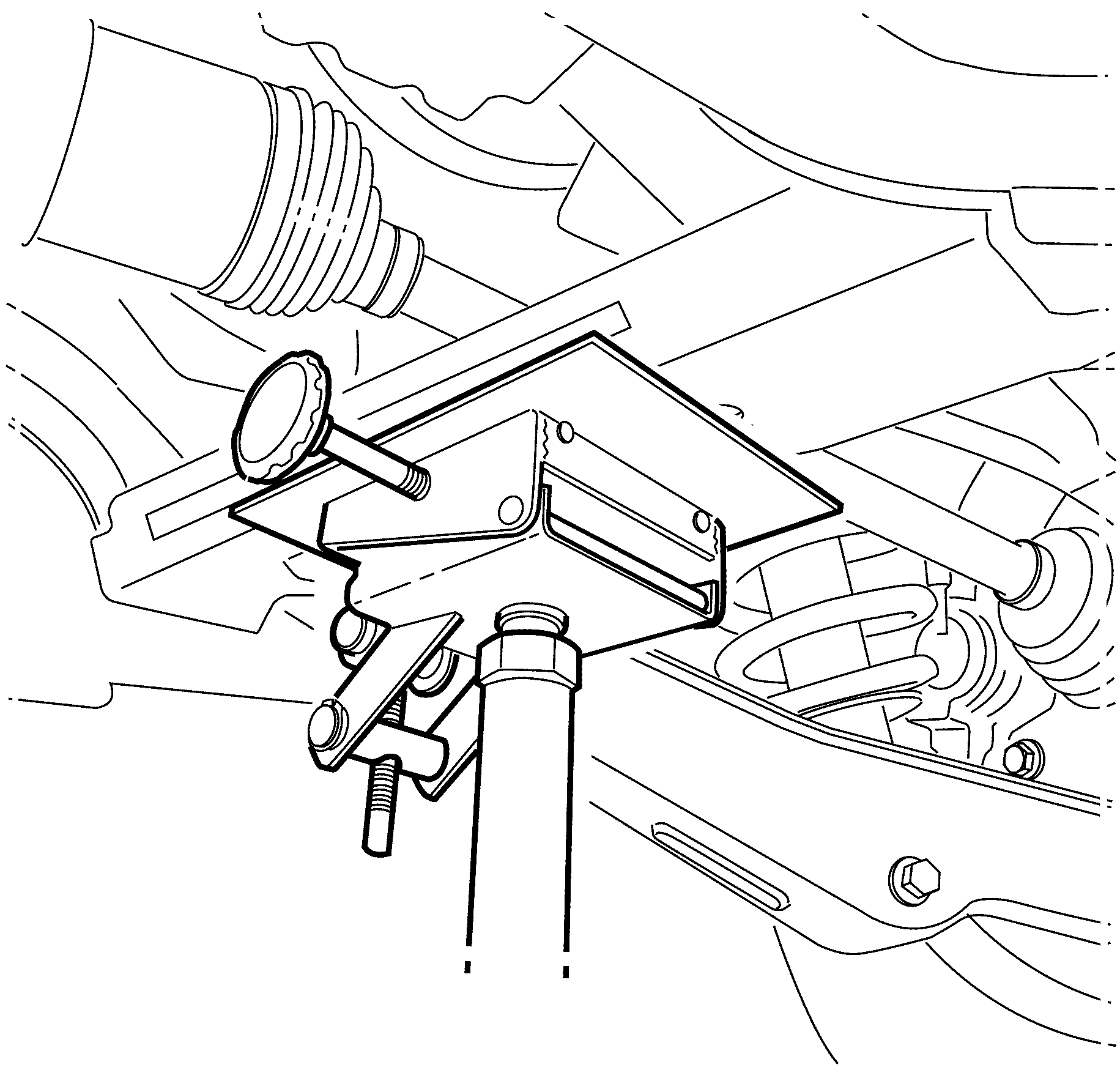
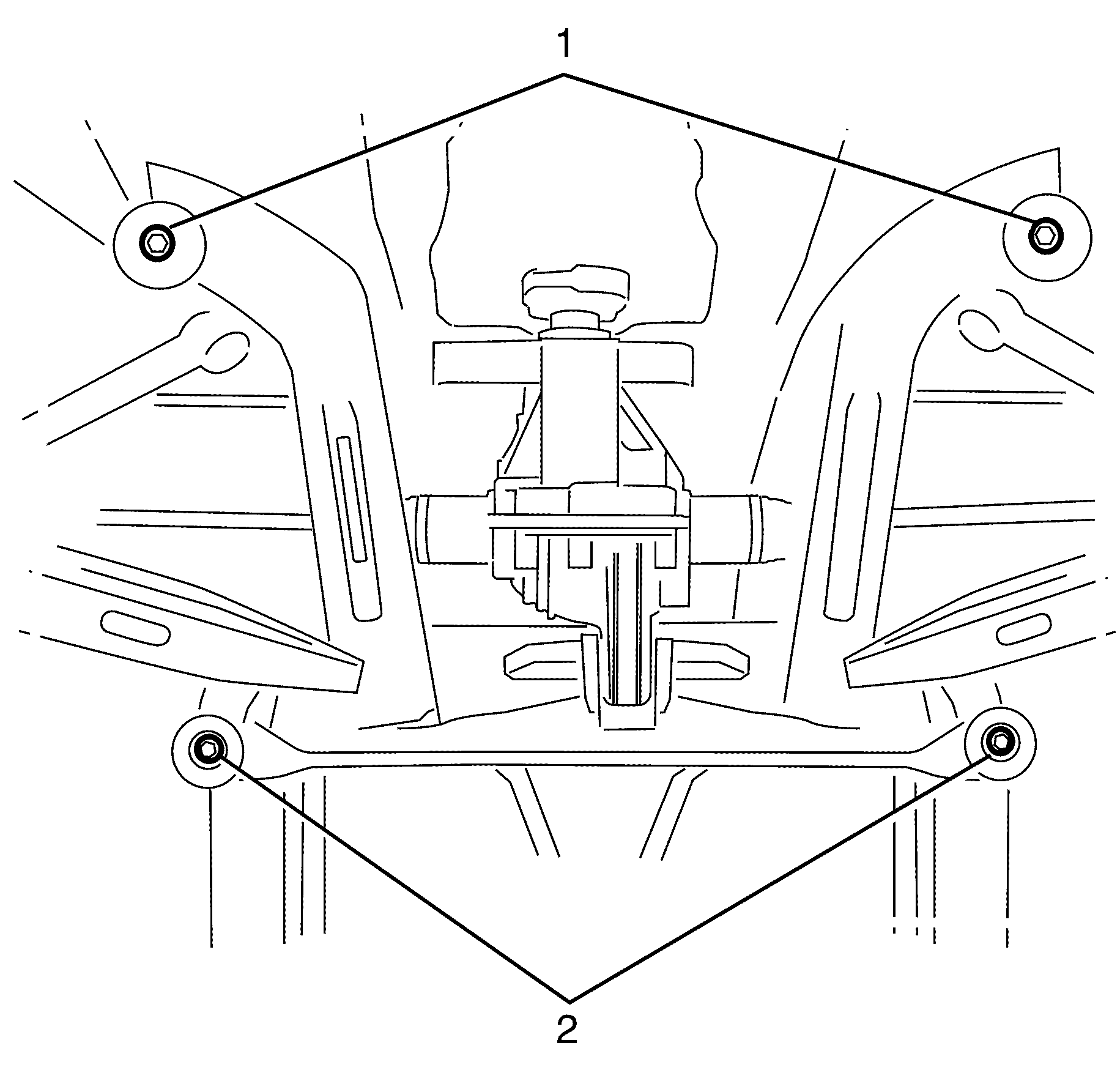
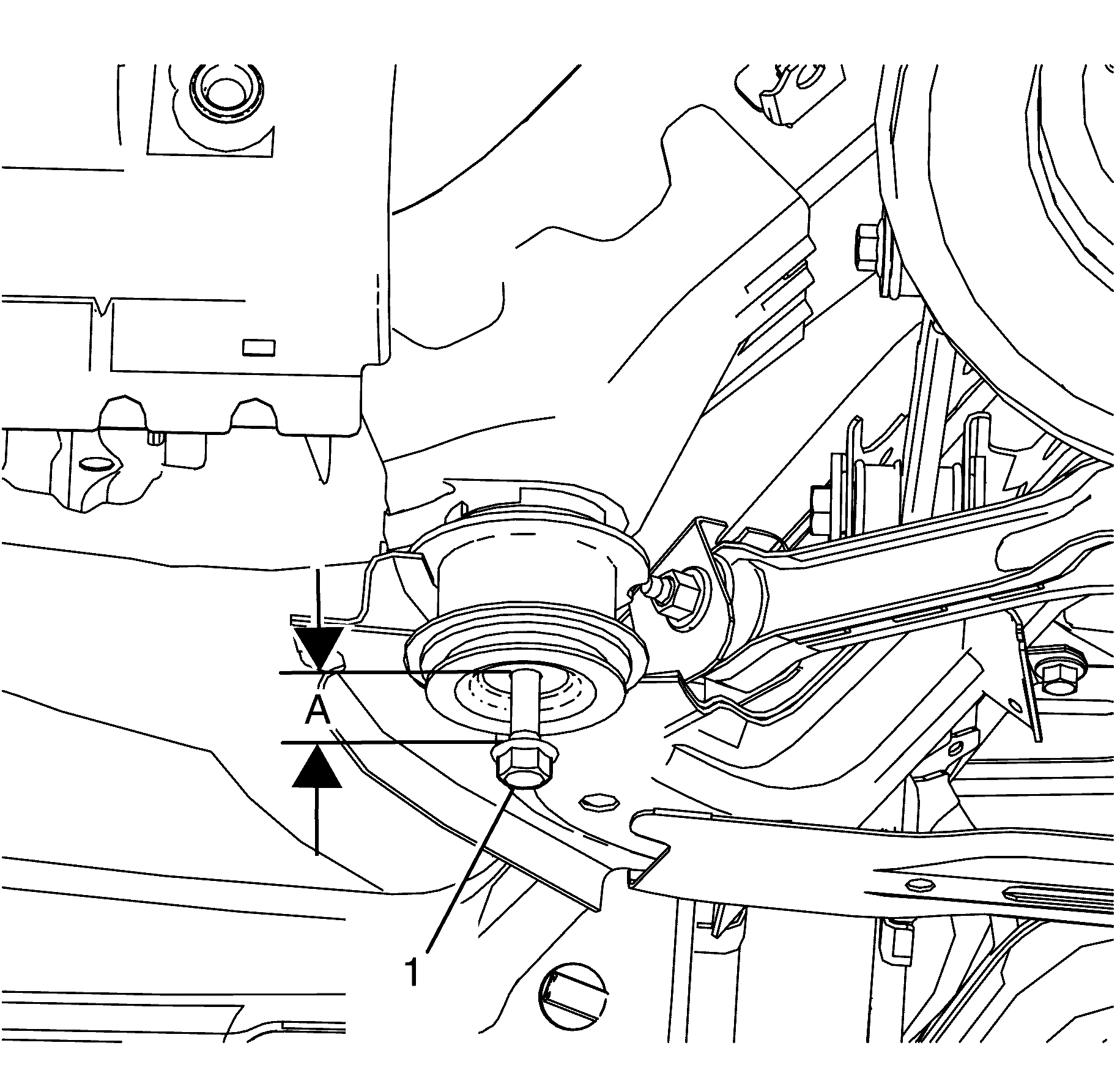
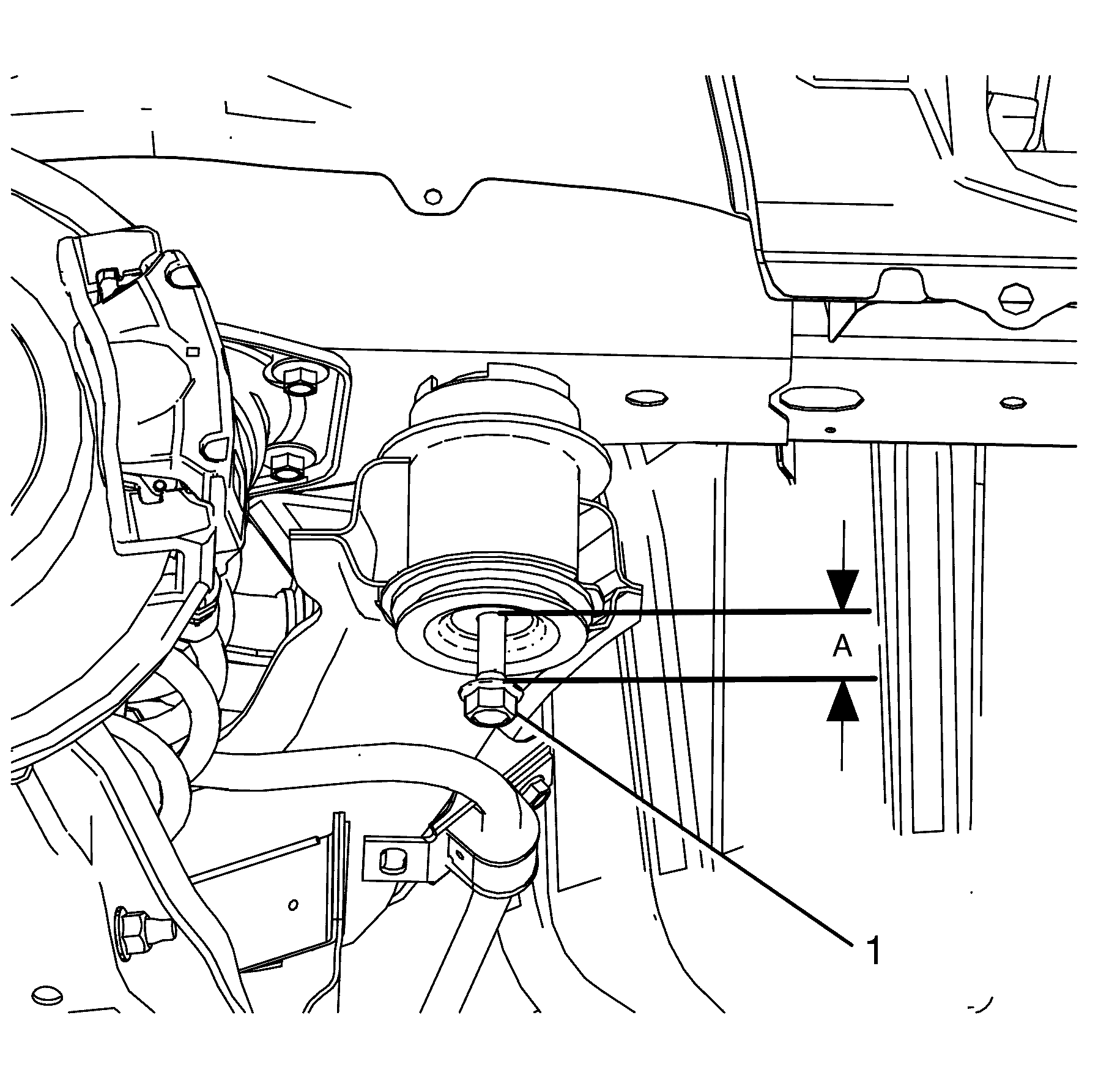
Important: When lowering the rear frame use care not to over extend the rear brake hoses.
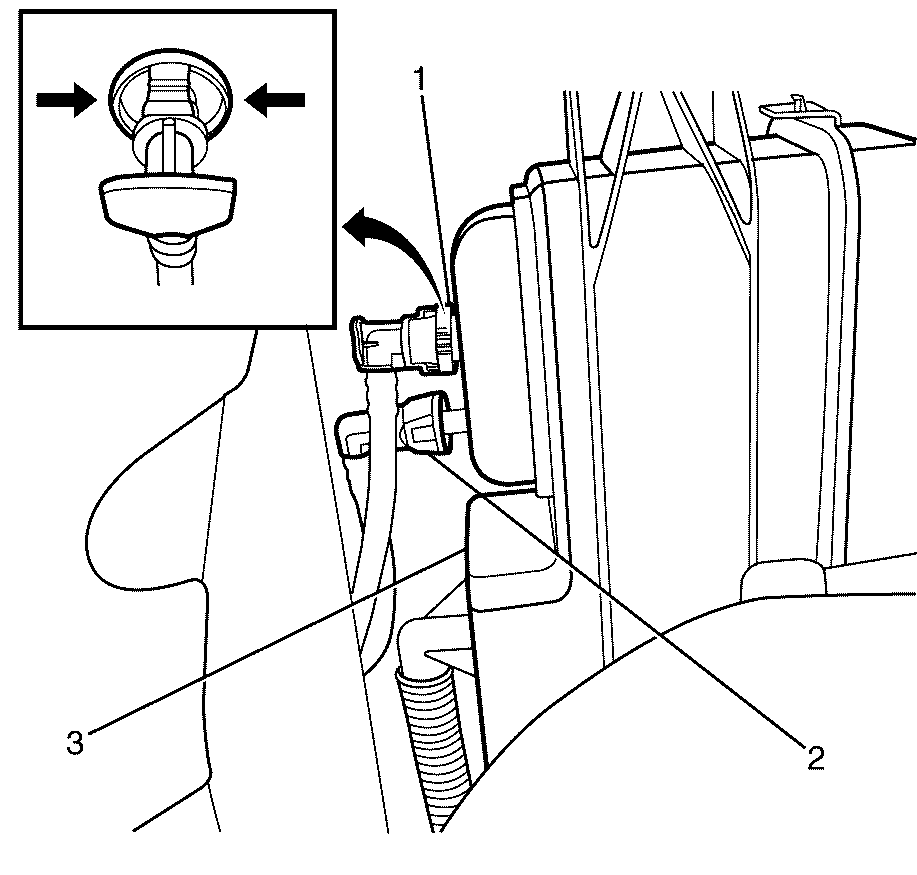
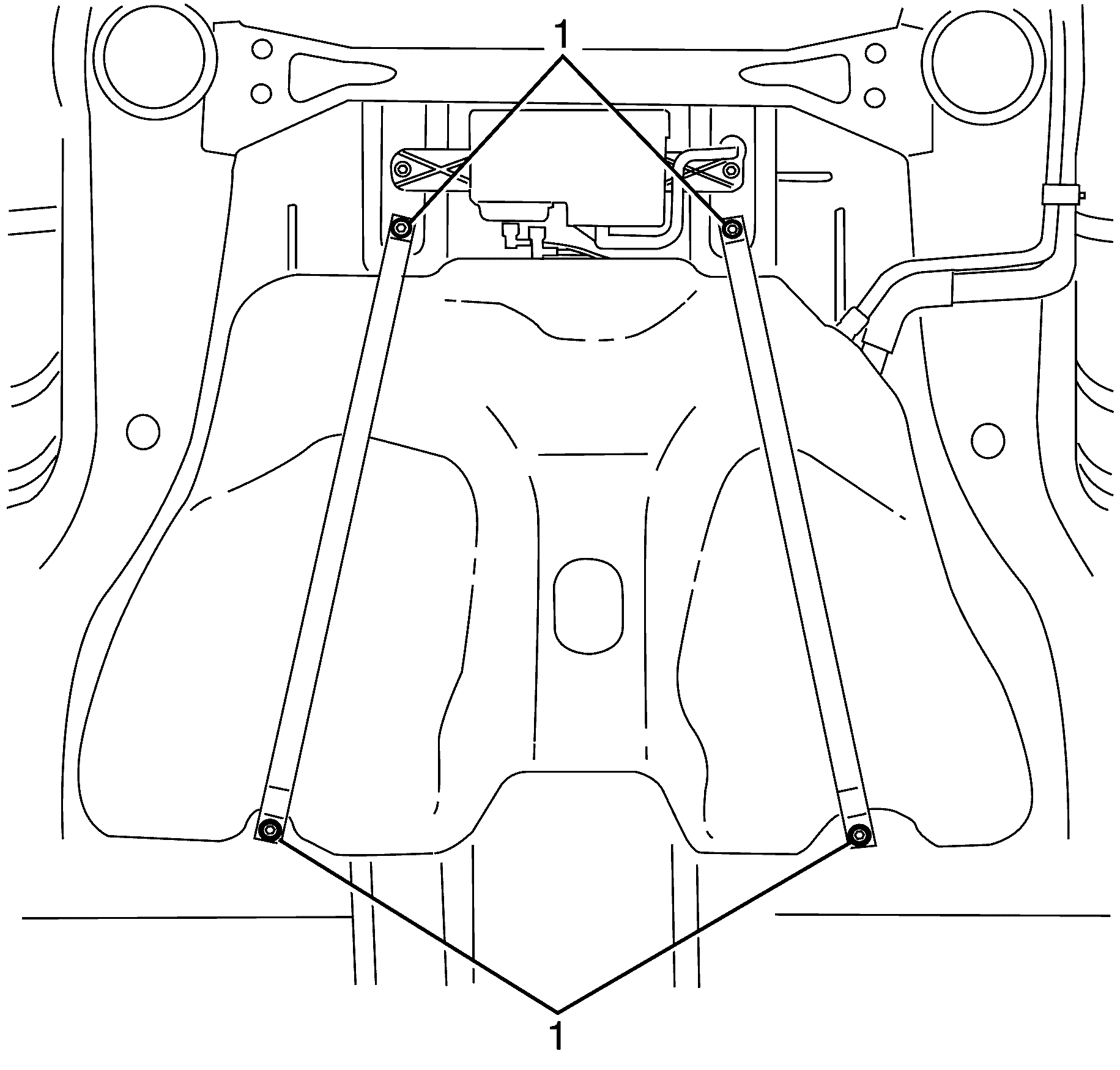
Important: Make sure the following are free from the
surrounding components while lowering the fuel tank:
• The fuel tank wiring harness. • The fuel hoses at the chassis pipes.
| • | The primary fuel tank module - Refer to Primary Fuel Tank Module Replacement . |
| • | The secondary fuel tank module - Refer to Secondary Fuel Tank Module Replacement . |
Installation Procedure
- Install the following components if fuel tank replacement was necessary.
- With the aid of an assistant, carefully raise the fuel tank to the vehicle.
- Carefully install the fuel tank straps back to their original form.
- Position the fuel tank straps around the rear frame and upward into position, aligning the holes in the straps with the threaded holes in the chassis.
- Install the fuel tank strap bolts.
- Connect the evapourative emission line (2) to the evapourative emission canister (3). Refer to Plastic Collar Quick Connect Fitting Service .
- Raise the rear frame assembly using suitable tool.
- Remove the special tool EN-48536 bolt (1) from the rear frame. Repeat for the opposite side.
- Remove the special tool EN-48536 bolt (1) from the rear frame. Repeat for the opposite side.
- Using a suitable tool clean the threaded holes in the rear chassis.
- Install the NEW rear frame to chassis retaining bolts (2).
- After retaining bolts (1 and 2) are installed tighten to.
- Remove the support tool.
- Connect the fuel tank electrical connector (1).
- Refer to Plastic Collar Quick Connect Fitting Service , in order to connect the following to the chassis bundle:
- Install the evaporative emission (EVAP) line (1), listen for an audible click to confirm fitting.
- Connect the filler hose (2) to the fuel tank.
- Connect the park brake rear cables to the park brake front cable equalizer bracket assembly. Refer to Parking Brake Front Cable Replacement .
- Install the propeller shaft. Refer to Propeller Shaft Replacement .
- Install the exhaust system. Refer to Exhaust System Replacement .
- Install the right rear wheel. Refer to Tire and Wheel Removal and Installation .
- Refill the fuel tank.
- Inspect for fuel leaks.
| • | The primary fuel tank module--Refer to Primary Fuel Tank Module Replacement . |
| • | The secondary fuel tank module--Refer to Secondary Fuel Tank Module Replacement . |
Important: Make sure the following are properly routed
while raising the fuel tank:
• The fuel tank wiring harness. • The fuel hoses at the chassis pipes.

Important: Make sure the fuel tank straps are not pressed into the fuel tank.
Notice: Refer to Fastener Notice in the Preface section.
Tighten
Tighten the fuel tank strap bolts to 20 N·m
(15 lb ft).


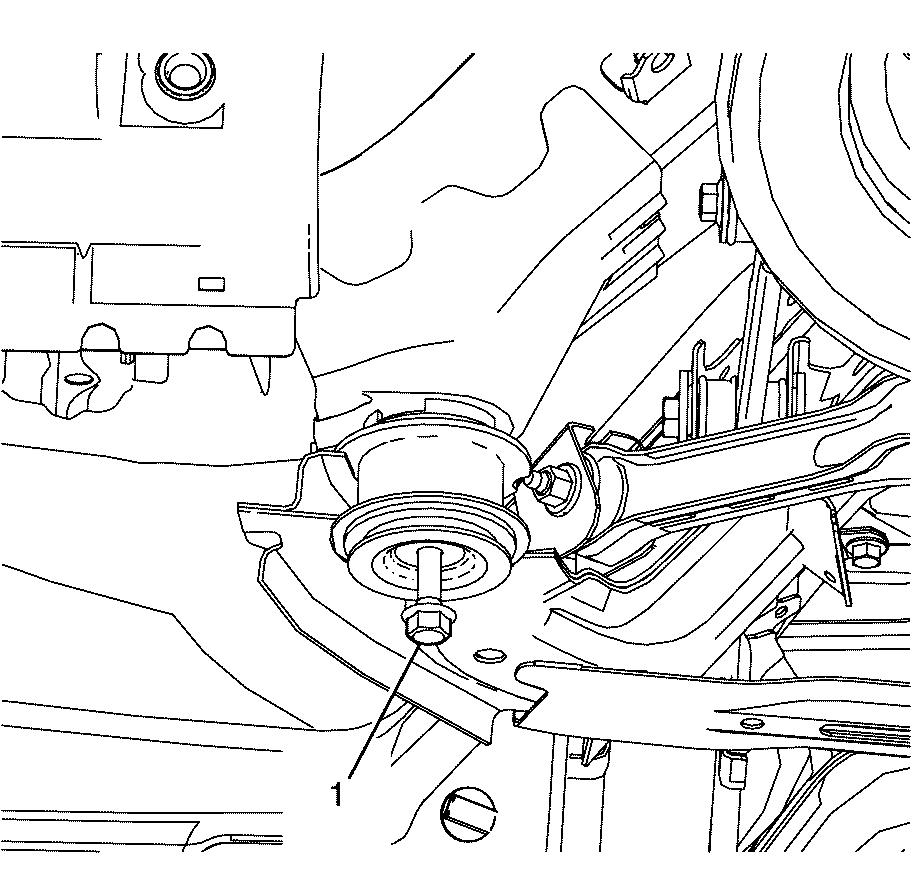
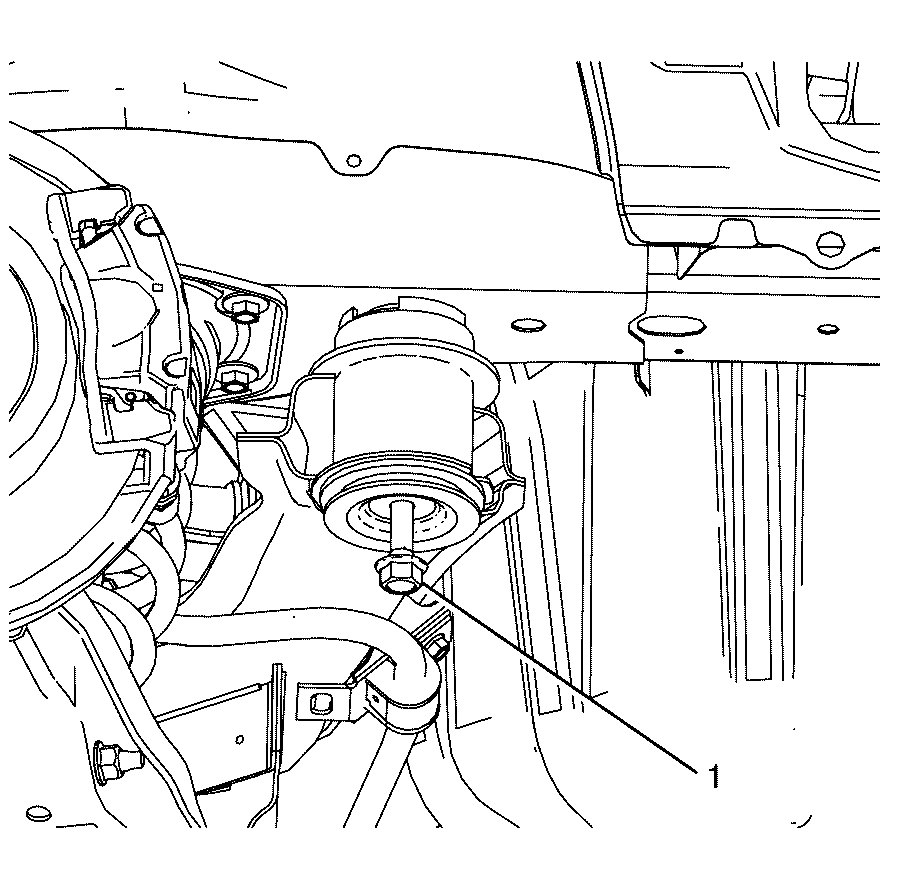

Important: Rear frame retaining bolts must not to be fully tightened at this stage.
Do not fully tighten at this stage.
Tighten
| • | First Pass: Tighten the bolts to 65 N·m (48 lb ft) |
| • | Final Pass: Tighten the bolts a further 125 degrees. |



| • | The fuel feed line |
| • | The fuel EVAP hose |


Tighten
Tighten the fuel filler tube hose clamp (1)
to 4 N·m (35 lb in).
Fuel Tank Replacement LPG
Removal Procedure
- Park the vehicle in a well ventilated area, away from any ignition source when performing this operation.
- Relieve the fuel system pressure. Refer to Fuel Pressure Relief.
- Empty the LPG tank. Refer to Liquefied Petroleum Gas Tank Unloading.
- Disconnect the battery ground cable. Refer to Battery Negative Cable Disconnection and Connection.
- Remove the cargo liner. Refer to Cargo Box Liner Replacement.
- Remove the LPG tank cover to body retaining bolts (1).
- Disconnect the LPG tank cover drain hoses (2) from the LPG tank cover (3).
- With the aid of an assistant, remove the LPG tank cover (3).
- Disconnect the LPG fill line (2) from the LPG tank fitting (1).
- Disconnect the LPG service line (1) from the LPG tank (2).
- Disconnect the electrical connectors from the LPG tank.
- Remove the vent hose (2) to LPG tank retaining clamps (1).
- Remove the vent hose (2) and all disconnected hoses and electrical connectors from the LPG tank.
- Raise and support the vehicle. Refer to Lifting and Jacking the Vehicle.
- Remove LPG tank to body retaining bolts (1).
- Remove LPG tank to body retaining bolts (1).
- Lower vehicle to the ground.
- Remove the LPG tank (1) from the vehicle (2)
Caution: Refer to Safety Glasses Caution in the Preface section.
Caution: Refer to Fuel Pressure Relief in the Preface section.
Caution: Refer to Battery Disconnect Caution in the Preface section.
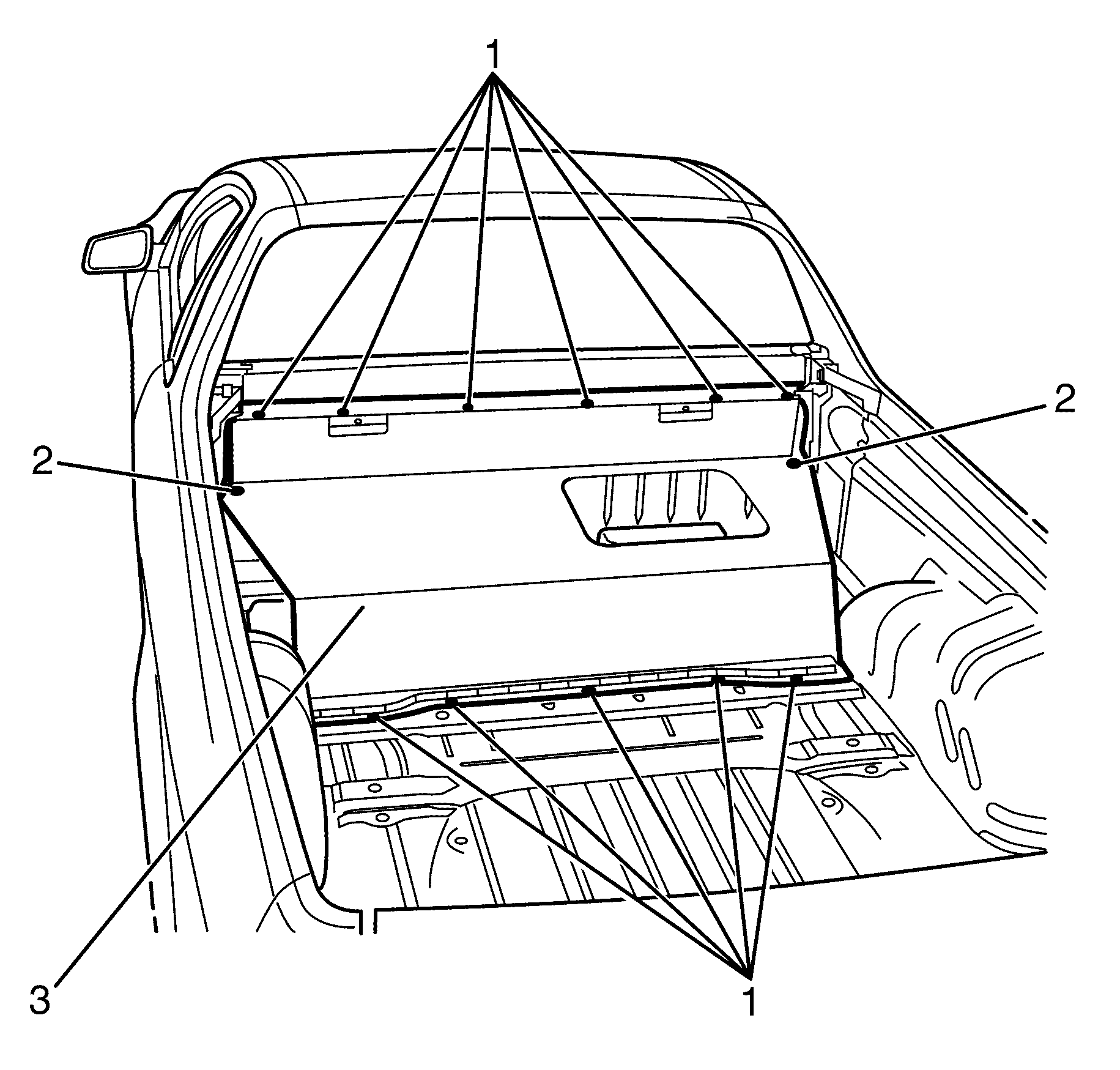
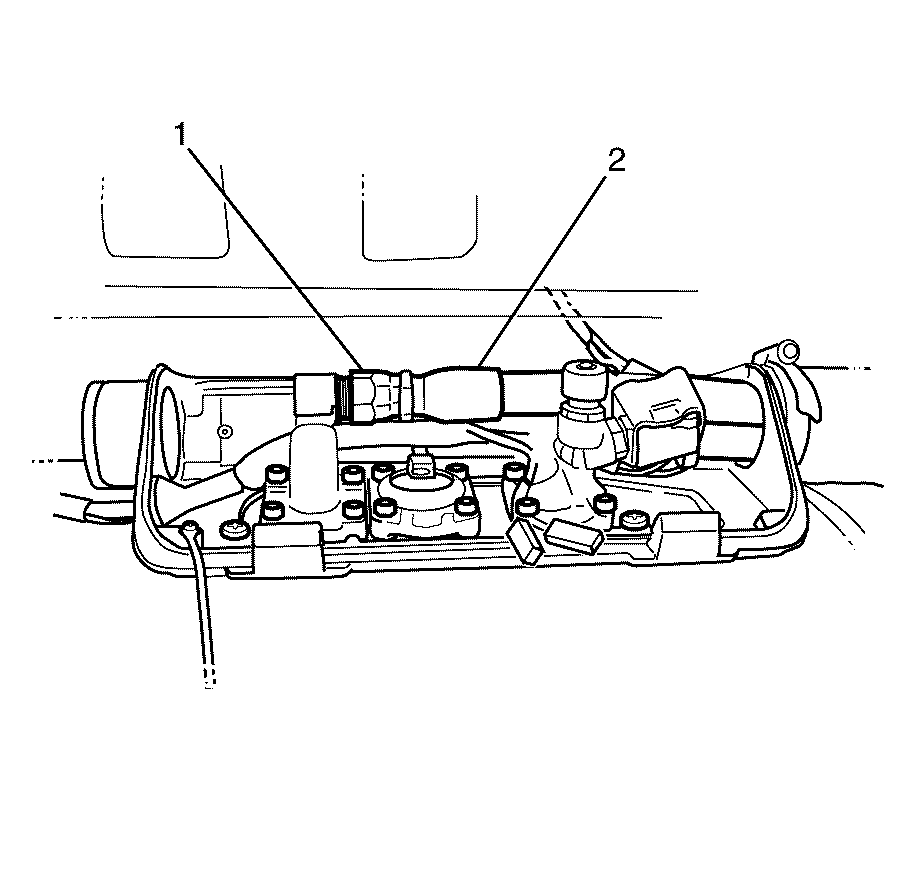
Important: Hold the LPG tank fitting (1) with a suitable tool when disconnecting the LPG fill line (1) to prevent damage to the LPG tank fitting

Important: Hold the LPG tank fitting (2) with a suitable tool when disconnecting the LPG service line (1) to prevent damage to the LPG tank fitting

Caution: Refer to Vehicle Lifting Caution in the Preface section.
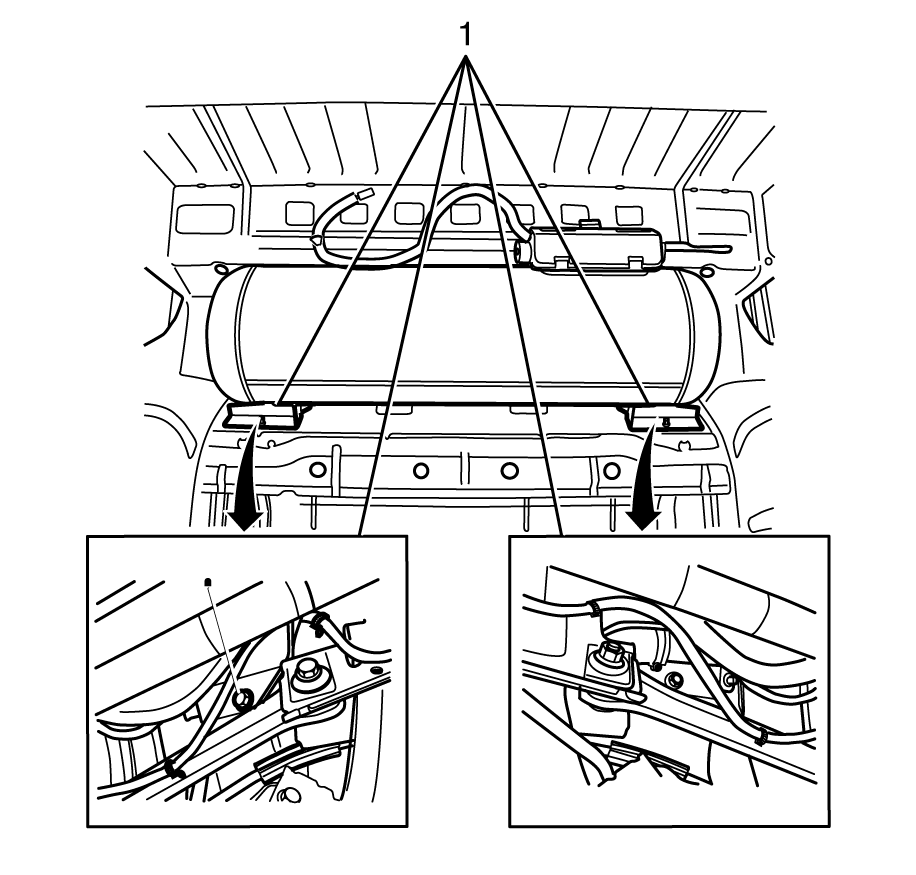
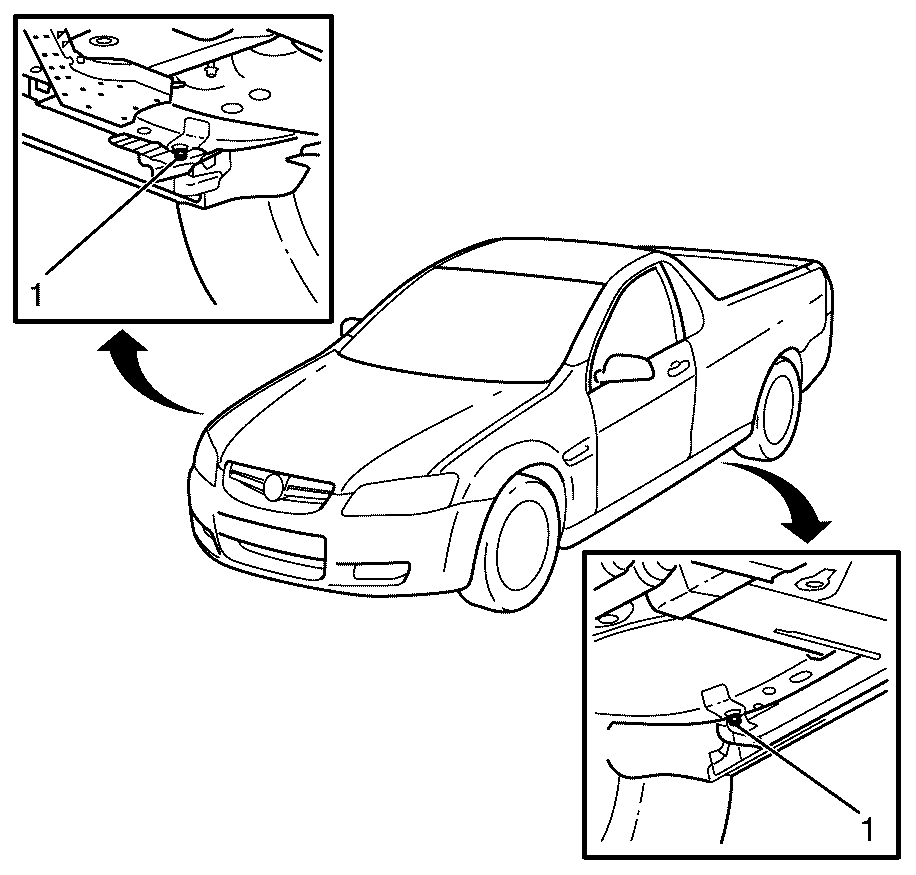

Important: Make sure that the LPG tank (1) is empty before removal.
Important: Remove the LPG tank (1) from the vehicle (2) with the aid of an assistant.
Installation Procedure
- Position the LPG tank (1) in the vehicle (2).
- Raise and support the vehicle. Refer to Lifting and Jacking the Vehicle.
- Install the LPG tank to body retaining bolts (1).
- Install the LPG tank to body retaining nuts and bolts (1).
- Lower vehicle to the ground.
- Install the vent hose (2) and connect hoses and electrical connectors to the LPG tank.
- Install the vent hose (2) to LPG tank retaining clamps (1).
- Connect the LPG service line (1) to the LPG tank fitting (2).
- Connect the LPG fill line (2) to the LPG tank fitting (1).
- With the aid of an assistant, install the LPG tank cover (3).
- Connect the LPG tank cover drain hoses (2) to the LPG tank cover (3).
- Install the LPG tank cover to body retaining bolts (1).
- Turn the LPG tap (1) on at the LPG tank.
- Connect the battery ground cable. Refer to Battery Negative Cable Disconnection and Connection.
- Install a small amount of LPG to pressurise the fill line and inspect for LPG fuel leaks at the serviced fitting's and filler using the combustible gas detector or an equivalent liquid leak detector.
- Start the vehicle and inspect for LPG fuel leaks at the serviced fitting's using the combustible gas detector or an equivalent liquid leak detector.
- Install the cargo liner. Refer to Cargo Box Liner Replacement.

Important: Make sure that the LPG tank (1) is empty on installation.
Important: Position the LPG tank (1) into the vehicle (2) with the aid of an assistant.
Caution: Refer to Vehicle Lifting Caution in the Preface section.
Notice: Refer to Fastener Notice in the Preface section.

Tighten
Tighten the nuts and bolts to 30 N·m
(22 lb ft).

Tighten
Tighten the nuts and bolts to 30 N·m
(22 lb ft).


Important: Hold the LPG tank fitting (2) with a suitable tool whilst connecting the LPG service line (1) to prevent damage to the LPG tank fitting
Tighten
Tighten the nut to 18 N·m (13 lb ft).

Important: Hold the LPG tank fitting (1) with a suitable tool whilst connecting the LPG fill line (2) to prevent damage to the LPG tank fitting
Tighten
Tighten the nut to 18 N·m (13 lb ft).

Tighten
Tighten the bolts to 12 N·m (9 lb ft).
